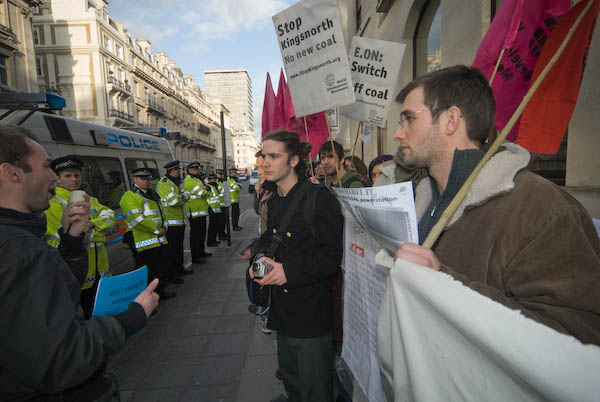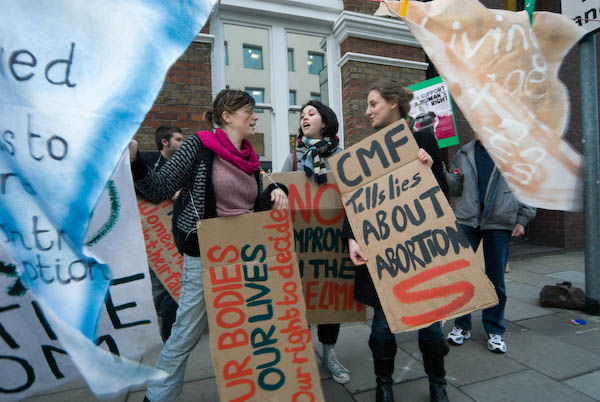Jacob Holdt‘s work is a slide-show of images he took while hitch-hiking across America as a penniless and trusting Dane from 1970-75. On his odyssey he met and befriended many, mainly from the poorer American underclass, both black and white (though mainly black), living with them. As he has often said, he was a wanderer, a vagabond (occasionally an image made me think of Gaylord Oscar Herron, a photographer of the same era with very different work – and like Larry Clark, from Tulsa) I though and not a photographer and took his pictures largely as a record of his travels with a cheap Canon Dial half-frame camera sent him by his family so he could show them what he was up to. Back in Denmark, he made a slide show, which became in great demand, and before long he was showing it to mainly student audiences across America and elsewhere, a career that has kept up for over 30 years.
This work has been available on the web for years, and I wrote about it and linked to it a few years ago in those days when I had an audience of millions. Last year his work was picked up by Steidl and published in a book, leading to this nomination.
Holdt obviously has a great deal of interest and empathy for the subject that he took on – the American underclass and its treatment by rich America. He has a great ability to get to know people and gain their confidence (and apparently still keeps in touch with many of those he photographed.) But much as I liked his work on the web I found the slide show at the Photographers Gallery hard to watch. It’s perhaps some measure that, having come in part way through the showing I found it very hard to be sure when I had got to the same pictures again, and I think watched another 10 or 15 of the 81 slides before I was sure I had seen one before.
Much of the problem for me is quite simply his photographic incompetence. Almost every picture I found myself thinking “if only…” There was this guy in a fantastic situation and if only he had taken a slightly different viewpoint or moment, or got the exposure closer to correct or had better lighting… Add to that some decidedly odd colour processing and rather small negatives, along with what appears to have been a deliberate immersion in dust and hairs. In a way it’s like citizen journalism, those fuzzy cameraphone images whose very lack of quality sometimes adds to their impact, the feeling that comes from them being records from someone who was really caught on the spot when the bomb went off. Powerful as they may be, I wouldn’t be happy if one of these scooped the World Press Photo Prize.
There is a programme at the gallery with his captions in running order, but it isn’t really good enough (and impossible for me to read in the dark.) What the slide show needs is his commentary, as well as more thought about the timing for different images.
For the book the images were made much more respectable, cleaned up, and some corrections made to the exposure, though some images are still clearly beyond the limits of the film. Together with the much smaller scale of the printed images, these changes make the work look much better in the book than in the slide show. The book is also I think better edited, although most of the pictures in the slide show are also in the book.
Several of the images shown included TV sets, but in one the screen appeared on the initial view to have a huge crack across it, sending my mind flying in a particular direction until I realised that it was only either a hair (or the image of a hair) on the slide. The interiors did make me recall the very different work of Chauncey Hare, truly one of photography’s forgotten figures, and his book ‘Interior America‘ whose work showed a deep spiritual despair at the centre of the nation. Unlike Holdt, Hare was a photographer, although after making the work in this book and ‘This Was Corporate America‘ (1985) he moved out of photography into taking more direct action as a co-director and therapist involved in a not-for-profit community-based business supporting those who have been abused at work.
Holdt tells a powerful story, and the pictures provide some good illustrations for it. On the web presentation he also makes use of pictures from other sources, including historical documents about slavery. He writes about his own pictures “I have never been interested in photography as art so very few of my pictures can stand alone“, and I think he is right. And whatever you think about photography and his work I think it would be beyond human ingenuity (even of such ingenious people as those on the jury) to justify his work as making any significant “contribution to photography over the previous year.” So perhaps he should be my hot tip!


